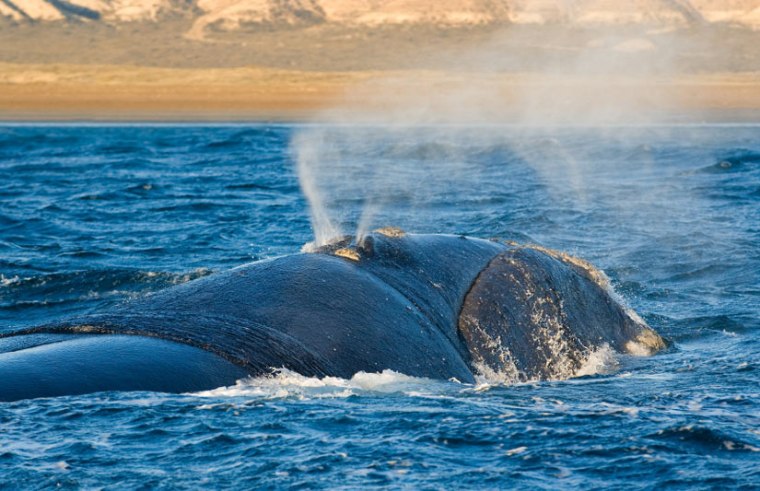A teenager who reportedly climbed on the back of a southern right whale could be charged with harassment of wildlife, according to Australia's Department of Environment and Conservation (DEC), which is now investigating the matter. The incident occurred last Friday afternoon about 65 feet off of Middleton Beach in Albany, Australia.
Regardless of whether the teen, who hasn't yet been found or identified, acted illegally, the culprit's behavior endangered the lives of both the animal and the rider.
"Adult southern right whales can reach 59 feet in length and weigh up to 88 tons," DEC Albany district manager Mike Shephard explained. "If you are in the way of a tail slap or when it breaches, you are unlikely to survive."
"The required exclusion zone around whales is 328 feet for boats and 98.4 feet for swimmers, surfers or people on kayaks," Shephard added. "This is to protect whales from being harassed or injured by boat strike and to protect people from harm."
Southern right whales at this Australia site sometimes come close to shore to rest and to allow their calves to gain strength in calm waters. Australian and New Zealand coastlines are often popular stopping grounds for whales at this time of year, when certain species migrate to and from Antarctic waters.
In recent weeks, Albany Whale Tours has reported that up to 50 whales have been seen daily near Middleton Beach.
Sue Rocca, a biologist at the Whale and Dolphin Conservation Society of North America, thinks it's likely the teen was on a boat before boarding the whale. Boats themselves pose risks to whales, she said, due to noise from the propeller, propeller strikes and, as Shephard also mentioned, boat strikes.
"Southern right whales are facing an accumulation of threats now," Rocca told Discovery News. "Not only are the whales dealing with fishing gear, plastics, other pollutants and climate change, now they have some silly person jumping on them!"
If the person was unarmed and did not block the whale's blowhole or hit an eye, she believes it is unlikely the individual could have caused the whale direct physical harm.
"A southern right whale's muscles make it like a 900 horsepower engine, so jumping on a whale would be more dangerous for the person than the whale," Rocca explained.
Nevertheless, the stunt may have altered the whale's feeding, breeding or other activities. Such disruption of a wild animal's behavior can fall under harassment from a legal standpoint.
Sometimes even well intentioned people can be guilty of harassing wildlife, Rocca indicated.
Individuals used to feed dolphins at places such as the Florida coast, she explained. One dolphin, appropriately nicknamed "Beggar," wound up spending 70 percent of his time begging near boats for food that included everything from bologna to potato chips and beer.
It is now illegal for the public to feed dolphins in the United States, Rocca said.
Her organization is also against swim with dolphin and whale programs, she added, since these are "clearly done not on the marine mammal's terms" and can also disrupt the natural behavior of the animals.
Such programs are more common, but she said individuals can also pay to swim with humpback whales in the waters off of the Dominican Republic and Tonga.
For a personal, yet safe, experience, she instead recommends whale watching.
"Whale watching is now a $2-billion industry," she said. "It's important to local economies and, if done right, can benefit humans as well as whale conservation efforts."
